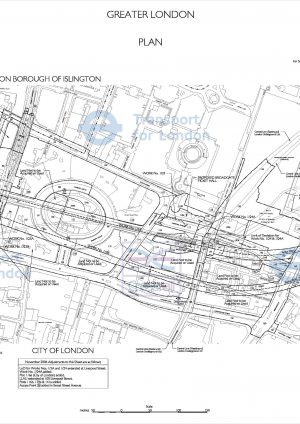
Land Acquisition for Crossrail
Document
type: Micro-report
Author:
Ian Lindsay
Publication
Date: 09/07/2018
-
Abstract
The land acquisition process undertaken for Crossrail has been amongst the most complex ever undertaken in the UK, given the extent of the project from Reading and Heathrow in the west through to Shenfield and Woolwich to the east and south east of London, and including two 21km tunnels through the heart of the west end and the City of London. On this basis, the land interests affected include many of London’s most economically important districts, and also some of its most historic urban fabric. This micro report sets out the processes used, lessons learned and recommendations for future practice. It will be of interest to promoters and land acquisition specialists.
-
Read the full document
Introduction
The land acquisition process undertaken for Crossrail has been amongst the most complex ever undertaken in the UK, given the extent of the project from Reading and Heathrow in the west through to Shenfield and Woolwich to the east and south east of London, and including two 21km tunnels through the heart of the west end and the City of London. On this basis, the land interests affected include many of London’s most economically important districts, and also some of its most historic urban fabric.
The Crossrail Act 2008 (“the Act”) provided the powers for the compulsory purchase of land required for the construction and operation of the railway. Crossrail Ltd was appointed nominated undertaker for the project and the agent of the Secretary of State for the exercise of the land acquisition powers and was given a statutory window of five years from when the Act became law in July 2008 to exercise the compulsory acquisition powers. During this period 11,404 notices were served to acquire some 150 hectares of surface land and 10,000 cubic metres of sub-soil for the tunnels. The final cost of acquisition is likely to out-turn at some £860m, which is well below the estimate for the initial business case. However, five years to determine acquisition boundaries, identify land interests and serve statutory notices is not generous for such a complex undertaking and more cost-effective decisions could have been made with more time, for example by involving contractors more fully in the design process and by having funds early to assist all occupiers to mitigate the impact of dispossession.
Extent of land required
Whilst the Act specified the extent of the land over which compulsory purchase powers could be used, Crossrail was required to demonstrate for each work package that it would acquire no greater amount of land than reasonably required to deliver the railway project and that the proposed use of compulsory purchase powers was proportionate and in the public interest. The project could have been defined more widely as both a transport and regeneration project, both of which were in the public interest. Consequently, more logical and ultimately slightly larger footprints could have been assembled particularly in the outer areas supporting both land value capture and accelerating the regeneration benefits of the scheme.
With the benefit of hindsight, this approach to minimise the amount of land taken may sometimes have been applied too rigorously by the project. A number of construction sites ended up smaller than needed to build out economically and were often further restricted by the 4,000 undertakings and assurances given during the passage of the Bill. For example, acquisition was sometimes restricted to sub-soil only beyond the building line, excluding basements to the building and limiting space for diaphragm wall construction. In future the ‘ad medium filum’ principle needs to be adhered to, allowing acquisition to the centre of roads.
Inevitably, the pressure to minimise land taken also saw a need to acquire sites beyond the limits that had been specified in the Act or where the requirement was identified outside of the five-year time window, and for the most significant of these Crossrail promoted three additional Transport & Works Act Orders for acquisition of additional land under compulsory powers. These are complex, costly and time-consuming processes and plenty of contingency needs to be built into planning the programme of acquisition to allow flexibility for such eventualities.
Temporary acquisition
Schedule 5 and Section 47 of the Act allowed Crossrail to take land temporarily and in future temporary use of land may become more common with the introduction of new powers in the Neighbourhood Planning Act 2017. However, temporary land deals were often more complex than permanent acquisition and were not suitable for development sites. In addition, land temporarily acquired may not prove cost effective compared to permanent acquisition if required for more than four to five years.
Land disposal policy
A further project constraint was imposed by the Crossrail Land Disposal Policy (“the Policy”), agreed during the parliamentary process. The Policy supplements the ‘Crichel Down Rules’, which require land acquired by compulsory purchase to be offered back to the original owners where that land is no longer required. Sites acquired for the construction and operation of new Crossrail stations have been materially changed in character and thus there would be no obligation under the Crichel Down Rules to offer the sale of an interest in that land to the former owners. The Policy re-applies that obligation despite the material change in character. The attractiveness of such development opportunities has seen former owners challenge Crossrail’s application of this policy in the courts and although Crossrail’s interpretation has been upheld on both occasions, this has added unnecessary time and cost to the project and may have impacted the value of these sites in off-setting overall project costs.
Management of Compensation
Compensation for land compulsorily acquired for Crossrail was in line with the National Compensation Code. Crossrail worked closely with the CPO valuation team at Transport for London to ensure such principles were fairly and consistently applied across the 1,600 or more claimants affected, and as a result out-turn costs are predicted to be some 1% below budget. This exemplary outcome for Crossrail is attributable to a number of factors.
- Firstly, Crossrail and TfL developed a range of high quality project and programme management tools involving project dashboard reporting and efficient governance arrangements as well as IT systems to manage the production of notices, the acquired title in land and financial control of payments to claimants and the Property Cost Estimate.
- Secondly, TfL ensured there was a team of experienced senior surveyors who understood the property acquisition risks (on both the statutory processes and negotiating compensation) and who could put in place mitigation strategies in good time. Such experience enabled them to appoint the best external consultancy advice and act decisively on their recommendations
Many of these tools are now seen as ‘best practice’ within the industry and Crossrail’s learning here, which also drew on experience from the 2012 Olympics, could be adopted by future infrastructure and regeneration projects who are acquiring land by compulsory purchase.
Summary of lessons learned and recommendations for future projects
- A longer period for acquisition could have enabled more cost-effective delivery, greater support for occupiers and possibly avoided the need to apply for additional consents
- Defining the project more widely as both a transport and regeneration project could have enabled more logical and ultimately slightly larger footprints to be acquired and therefore greater benefits of the scheme to be realised
- ‘ad medium filum’ principle should be used for acquisition of land below the surface
- Temporary acquisition is often more complex and costly than permanent acquisition
- Land disposal policy should take into account where land has been materially changed in character to avoid costly challenges
- A knowledgeable client team, experienced valuation surveyors, good governance and high quality project and programme management tools and systems are required to manage the property costs effectively.
-
Authors
Ian Lindsay
As Land & Property Director at Crossrail 2011-2018, Ian delivered one of the most complex compulsory purchase programmes ever undertaken in the UK, managed the acquired estate and put in place the design, planning and commercial contracts for 3.5m sq.ft of Over-Site development and 190,000 sq.m of public realm improvements. A Chartered Surveyor and property/ infrastructure specialist Ian is now a partner at property advisers Aspire.
